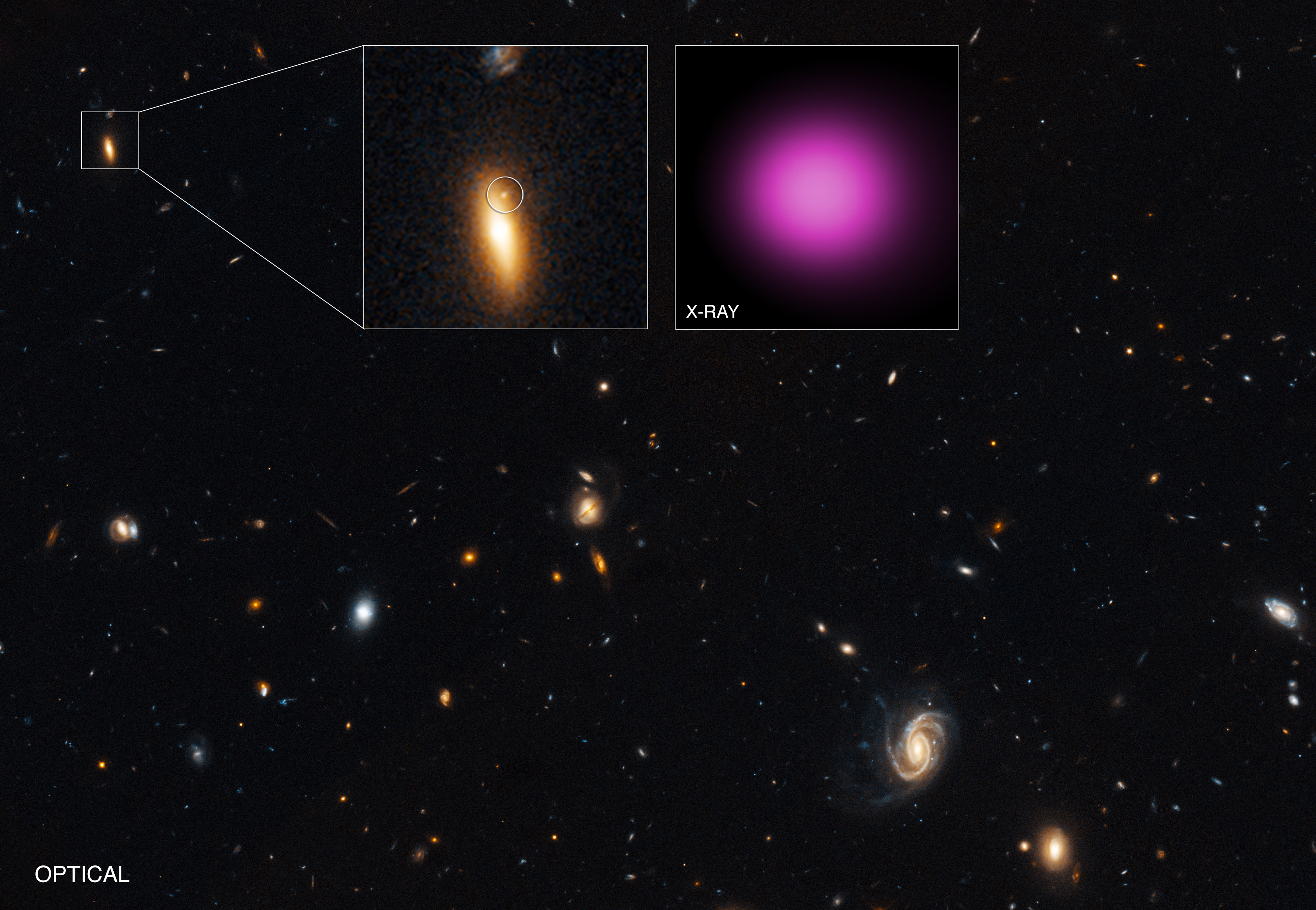Rogue Black Hole Wanders Toward Galaxy's Edge

Most galaxies house a supermassive black hole at their core, but occasionally these large cosmic features "go rogue" and wander away from the galactic center.
One of these "rogue" black holes was recently spotted near the edge of its parent galaxy, located about 4.5 billion light-years from Earth, according to a statement from NASA. The black hole was spotted using data from NASA's Chandra X-ray Observatory and the European Space Agency's (ESA) XMM-Newton X-ray observatory.
The black hole, named XJ1417+52, is a so-called intermediate-mass black hole, tipping the scale at about 100,000 times the mass of the sun, the statement said. This is smaller than supermassive black holes, which are generally defined as those with 100,000 to 10 billion times the sun's mass. [The Strangest Black Holes in the Universe]
Black holes found wandering away from the center of their parent galaxies are typically thought to have been part of a collision or merger between two galaxies. XJ1417+52 was found in an outlying region of its current host galaxy, called the Extended Groth Strip.
Using observations from the Hubble Space Telescope, scientists said they may have discovered how XJ1417+52 arrived at its current location. According to the statement from NASA, scientists have identified an optical source that "may be associated with XJ1417+52."
The findings, the statement said, "suggest that the black hole could have originally belonged to a small galaxy that plowed into the larger GJ1417+52 galaxy, stripping away most of the smaller galaxy's stars but leaving behind the black hole and its surrounding stars at the center of the small galaxy. If this idea is correct, the surrounding stars are what is seen in the Hubble image."
Observations also revealed that XJ1417+52 is extremely bright for a rogue black hole, leading astronomers to classify the object as a "hyper-luminous X-ray source."
Get the Space.com Newsletter
Breaking space news, the latest updates on rocket launches, skywatching events and more!
"At its peak, XJ1417+52 is about 10 times more luminous than the brightest X-ray source ever seen for a wandering black hole," NASA officials said in the statement. "It is also about 10 times more distant than the previous record holder for a wandering black hole."
The X-ray emissions from XJ1417+52 reached peak brightness between 2000 and 2002, the statement said. At this time, a star likely passed too close to the black hole and was gobbled up. Material from the star would have spiraled around the black hole like water circling a drain. That motion and acceleration would have caused the stellar material to become heated and radiate X-rays, which would have caused the observed spike in X-ray emissions, according to a study published April 5 in The Astrophysical Journal.
Follow Samantha Mathewson @Sam_Ashley13. Follow us @Spacedotcom,Facebook and Google+. Original article on Space.com.
Join our Space Forums to keep talking space on the latest missions, night sky and more! And if you have a news tip, correction or comment, let us know at: community@space.com.

Samantha Mathewson joined Space.com as an intern in the summer of 2016. She received a B.A. in Journalism and Environmental Science at the University of New Haven, in Connecticut. Previously, her work has been published in Nature World News. When not writing or reading about science, Samantha enjoys traveling to new places and taking photos! You can follow her on Twitter @Sam_Ashley13.









